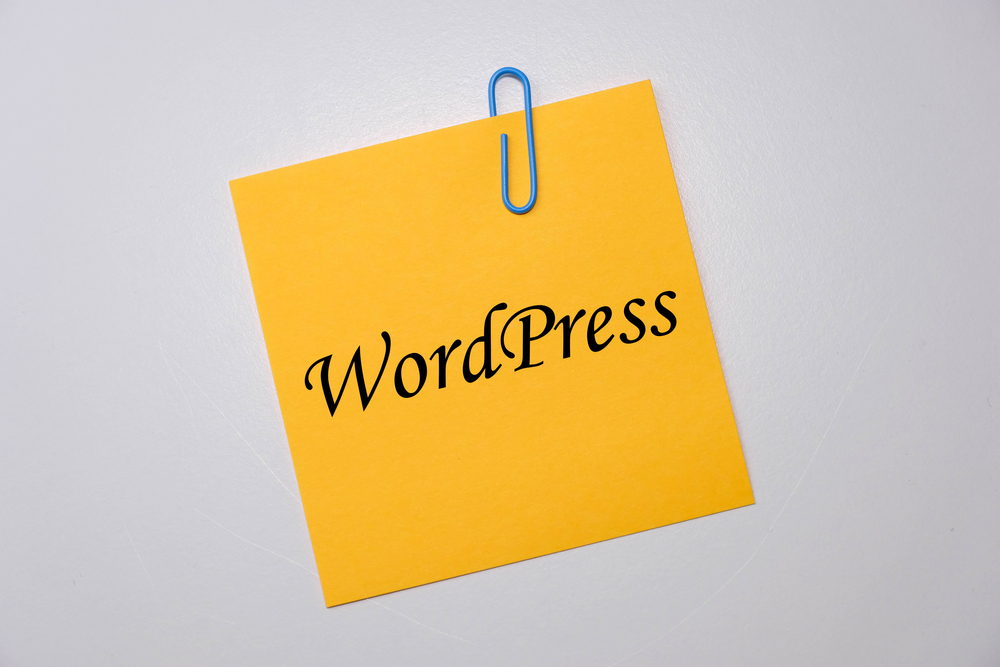
Mastering WordPress: Essential Tips for Customizing and Maintaining Your Website

WordPress has become the go-to platform for building and managing websites. Its user-friendly interface, vast plugin library, and customizable themes make it a powerful tool for individuals and businesses alike. Whether you're a beginner or an experienced user, there are always tips and tricks to enhance your WordPress (the platform for bloggers) experience. In this article, we will explore essential tips for customizing and maintaining your WordPress (or WP) website.
1. Choose the Right ThemeThe theme you choose sets the foundation for your website's design and functionality. The WordPress (the blogging platform) theme library offers a wide range of options, from free to premium themes. Before making a decision, consider your website's niche, target audience, and desired features. Look for a theme that is mobile-responsive, well-coded, and regularly updated by the developer.
2. Customize Your Theme
Once you have chosen a theme, it's time to customize it to match your brand and preferences. WordPress (WP) provides a built-in customizer that allows you to modify colors, fonts, and other visual elements without any coding knowledge. Additionally, you can further customize your theme by editing the CSS code or using a theme builder plugin.
3. Take Advantage of Plugins
WordPress is known for its extensive plugin ecosystem, which allows you to add new features and functionality to your website. From contact forms to e-commerce integrations, there is a plugin for almost every need. However, be mindful not to overload your website with too many plugins, as it can affect performance. Choose reputable plugins with frequent updates and positive reviews.
4. Optimize for Speed and Performance
A fast-loading website is crucial for user experience and search engine rankings. To optimize your WordPress site, consider the following tips:
- Compress and optimize images: Large image files can significantly slow down your website. Use image compression plugins or online tools to reduce file sizes without compromising quality.
- Enable caching: Caching temporarily stores frequently accessed data, reducing server load and page load times. Install a caching plugin like W3 Total Cache or WP Rocket to enable caching on your site.- Minify CSS and JavaScript: Minifying these files reduces their size, resulting in faster download times. Use plugins like Autoptimize or WP Super Minify to minify your CSS and JavaScript files.
5. Regularly Update WordPress Core, Themes, and Plugins
WordPress is continuously evolving, with new features, bug fixes, and security updates being released regularly. To ensure the stability and security of your website, it is crucial to keep your WordPress core, themes, and plugins up to date. Enable automatic updates whenever possible, but make sure to have a backup system in place before updating.
6. Backup Your Website Regularly
Backups are essential for any website, regardless of the platform you use. WordPress provides various backup solutions, both free and premium. You can use plugins like UpdraftPlus, BackupBuddy, or VaultPress to automate the backup process and store backups securely. Regularly backup your website to protect against data loss, hacking, or other unforeseen events.
7. Secure Your WordPress Website
WordPress's popularity also makes it a target for hackers and malicious attacks. Protect your website by following these security best practices:
- Use strong passwords: Choose unique, complex passwords for your WordPress accounts to minimize the risk of password-related attacks.
- Limit login attempts: Install a plugin like Login Lockdown or Limit Login Attempts to restrict the number of login attempts a user can make within a specific time frame.- Install a security plugin: Plugins like Wordfence or Sucuri Security can help monitor and protect your website against malware, brute force attacks, and other security threats.
Frequently Asked Questions:
Q1. How can I install WordPress for my website?A1. Installing WordPress is relatively easy. Most hosting providers offer one-click installations through their control panel. If your hosting provider doesn't have an automatic installer, you can manually install WordPress by downloading the files from wordpress.org and following the installation instructions.
Q2. Can I change my WordPress theme after building my website?
A2. Yes, you can change your WordPress theme at any time. However, switching themes may affect the appearance and functionality of your website. Before making any changes, it is recommended to backup your website and thoroughly test the new theme on a staging environment.
Q3. How do I add a contact form to my WordPress website?
A3. There are several contact form plugins available for WordPress, such as Contact Form 7, WPForms, or Gravity Forms. Simply install and activate the plugin of your choice, then follow the plugin's documentation to create and add a contact form to your website.
Q4. Can I make money with my WordPress website?
A4. Yes, WordPress provides numerous ways to monetize your website. You can display advertisements using Google AdSense or join affiliate marketing programs to earn commissions for promoting products or services. Additionally, you can sell digital or physical products through your website using e-commerce plugins like WooCommerce.
Q5. How can I improve my WordPress website's search engine optimization (SEO)?
A5. Improving your WordPress website's SEO involves several factors:
- Install an SEO plugin like Yoast SEO or All in One SEO Pack to optimize your content for search engines.
- Create high-quality, relevant content with proper headings, meta tags, and keyword usage.- Optimize your website's loading speed and mobile responsiveness.
- Build high-quality backlinks by promoting your content through social media and guest blogging.
In conclusion, mastering WordPress is a continuous learning process. By choosing the right theme, customizing it to fit your brand, optimizing for performance, keeping everything up to date, and implementing security measures, you can create and maintain a successful WordPress website. Remember to back up regularly and explore the vast WordPress community for additional tips, tricks, and support in your WordPress journey.
Other useful resources
- https://www.wordpress24plus.com/wordpress-tools-directory/
- https://www.wordpress24plus.com/services/
- https://en.wikipedia.org/wiki/WordPress